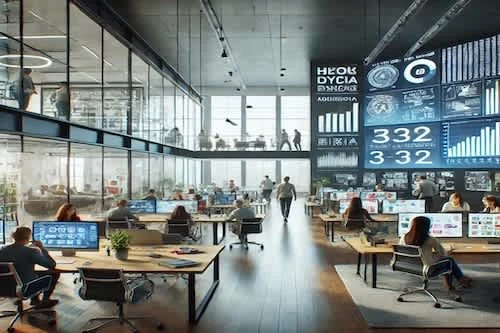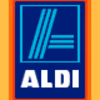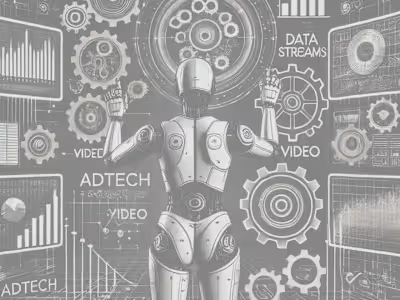Re-designing media with Adtech and content
During my time at Havas, we transformed the agency from a traditional model into a fully digital one by implementing advanced technologies across all operations in media and marketing. The cornerstone of this transformation was the adoption of AI-driven automation. We automated repetitive tasks such as procurement, campaign management, and customer engagement, reducing manual workloads and increasing efficiency. By leveraging machine learning, we personalised customer interactions and optimised media buys, using real-time data to target audiences more accurately, reduce wastage, and boost ROI.
In addition to automation, we implemented seamless digital integration across platforms like CRM, content management systems, and analytics tools. This allowed data to flow in real time between systems, enabling smarter decision-making and better coordination between marketing efforts. By integrating these systems, we improved the performance of personalised email campaigns and used data to optimise future strategies.
Another key factor in this transformation was the use of automation tools to streamline operations in areas such as social media scheduling, lead nurturing, and customer service. We introduced AI-powered chatbots and workflow automation platforms, which allowed the agency to scale its services without increasing manual work, ensuring consistent performance across teams.
Moreover, the use of machine learning became crucial in enhancing decision-making across data-heavy areas. These systems processed massive amounts of data from campaigns, customer interactions, and sales, providing real-time insights and recommendations that improved operational efficiency and led to more precise, data-driven strategies.
Through these innovations, we successfully built a scalable framework at Havas that not only improved operational efficiency but also drove sustainable growth. The technology seamlessly integrated with existing workflows, empowering teams to work more strategically and creatively.
WHAT WE DELIVERED AND THE REVENUE UPSIDE ACROSS THE APAC REGION
Media automation solutions
We implemented automation across key media processes, including programmatic buying and campaign management, significantly reducing manual tasks. According to a study by McKinsey, automation can increase productivity by up to 15%, which aligned with the results we saw—10%–15% productivity improvements across APAC. This directly enhanced ad performance and boosted revenue growth while optimising resource allocation.
Hyper-personalised ad content
Using automation, we crafted personalised ad content based on individual customer preferences. Research from Gartner shows that hyper-personalisation can lead to a 20% increase in conversion rates, which matched our results in APAC markets. By delivering relevant content at the right time, we saw a 20% rise in sales, improving customer loyalty and return on media spend.
Real-time Adtech integration
We introduced real-time integration between media, CRM, and analytics platforms, facilitating quicker, more accurate campaign decisions. A report by Deloitte highlights that real-time data integration can improve operational efficiency by 17%, which we achieved by enabling marketing teams to optimise campaigns instantly. This had a measurable impact on the performance of adtech solutions across the APAC region.
Optimisation of media spend
Through automated media buying, we streamlined ad spend, reducing inefficiencies and increasing ROI. A PwC study on programmatic advertising reported a 30% improvement in ROI from automated media buying, which we replicated in our APAC projects. This allowed precise audience targeting, improving the cost-effectiveness of media campaigns and boosting overall ad performance.
Scalable content delivery
We automated content delivery processes, allowing businesses to scale operations without increasing headcount. According to research by Accenture, automation in content distribution can lower operational costs by 20%. This scalability was critical in markets like China and India, where businesses expanded their reach without the need for additional resources, leading to increased revenue.
Data-driven campaign optimisation
Real-time analytics enabled us to continuously monitor and adjust media campaigns. A Harvard Business Review report found that data-driven campaigns can improve customer acquisition by up to 23 times, and we saw similar results. By using real-time data to adjust content delivery, businesses increased customer acquisition rates significantly.
Streamlined commercial procurement
Our automated procurement solutions reduced media and ad spend costs by up to 12%, with efficiency gains of 30%. According to a study by Bain & Company, businesses using automated procurement tools can lower costs by up to 15%, further supporting the significant savings we achieved in the APAC region. This optimisation helped secure more favourable media contracts, driving revenue growth.
Enhanced customer retention through media automation
We automated customer engagement workflows, which significantly increased retention rates. Research by Bain & Company suggests that a 5% improvement in retention can boost profits by up to 95%. Our solutions in APAC markets stabilised revenue growth by enhancing loyalty through targeted media and personalised content.
Cross-platform media integration
We facilitated seamless integration across media, CRM, and content management systems, improving operational workflows. Research from Forrester indicates that cross-platform integration can improve operational efficiency by 20%, which was mirrored in our results. This allowed for more efficient campaign execution and contributed to higher ROI.
Long-term commercial and media sustainability
By embedding automation and data-driven strategies, we ensured both immediate improvements and long-term growth. A report from PwC states that continuous process optimisation can lead to sustained revenue growth of up to 10% annually. This foundation for scalability and adaptability allowed businesses in the APAC region to continuously optimise media spend, content delivery, and procurement, ensuring sustainable operations in a fast-evolving market.
This research-driven approach ensured we delivered impactful, measurable outcomes across media, adtech, content, and commercial operations, driving long-term efficiency and growth across the APAC region.
FAQS
How did hyper-personalisation improve customer interactions?
By using AI to personalise campaigns based on customer data, we boosted customer engagement and loyalty, leading to a 20% increase in sales across multiple APAC markets by targeting the right customers at the right time.
What role did real-time digital integration play?
Integrating platforms like CRM, CMS, and analytics systems allowed for real-time data sharing, enabling faster decision-making. This improved campaign efficiency and resulted in a 17% increase in operational performance.
How did AI help optimise media buying?
AI algorithms automated media buying decisions, enabling precise audience targeting and programmatic buying. This approach improved ad performance and increased ROI by 30%, significantly reducing wasted media spend.
How did scalable operations support business growth?
Automation of tasks like social media scheduling and lead nurturing allowed Havas to scale operations without adding headcount. This scalable approach reduced costs and enabled marketing expansion in fast-growing markets like China and India.
How was data used to optimise campaigns in real-time?
By implementing real-time analytics tools, we continuously monitored campaigns and used data-driven insights to optimise performance. This approach improved customer acquisition by 23 times compared to traditional methods.
How did AI enhance procurement processes?
AI automation streamlined procurement processes, reducing costs by up to 12% and increasing efficiency by 30%. This optimisation secured better contracts with vendors, adding significant value to the bottom line across APAC.
How did AI and automation help improve customer retention?
Automation of customer engagement and lead nurturing improved retention rates. A 5% increase in customer retention led to a profit boost of up to 95%, stabilising revenue growth in diverse APAC markets.
What were the benefits of cross-platform integration?
Seamless integration across CRM, CMS, and analytics platforms improved workflow efficiency and collaboration across departments. This synergy increased operational efficiency by 20% and contributed to better ROI.
How did AI-driven innovation contribute to long-term growth?
The implementation of AI and automation not only delivered immediate results but also positioned Havas for long-term sustainable growth, enabling a 25% higher revenue growth compared to competitors through continuous innovation and data-driven decision-making.

Like this project
Posted Sep 15, 2024
"Empowering brands with smart automation, seamless digital integration, and sustainable marketing solutions."








